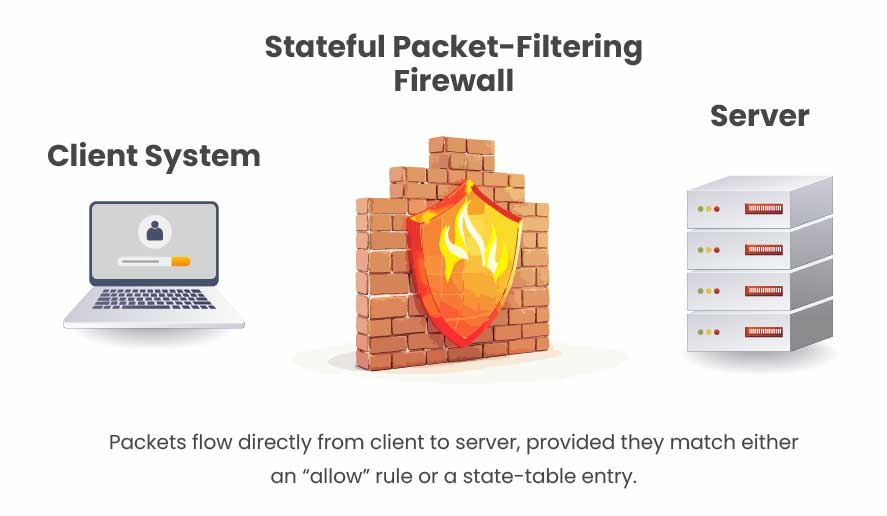Deep Packet Inspection (DPI), sometimes referred to as packet sniffing, is a technique used to analyze the contents of data packets as they move through a network checkpoint. Unlike traditional stateful packet inspection—which typically focuses only on packet headers such as source and destination IP addresses or port numbers—DPI goes deeper by examining both the header and the actual payload carried within the packet.

This extended visibility allows DPI to serve as a more powerful method for network packet filtering. Beyond the basic functions of conventional packet inspection, DPI can detect hidden threats within data streams, including data exfiltration attempts, policy violations, malware infiltration, and other malicious activities.
Table of Contents
How Deep Packet Inspection Works?
Deep Packet Inspection (DPI) works as a type of packet filtering tool that is often included in firewalls. It functions at the application layer within the OSI model.
DPI looks at the data inside packets as they move through a network checkpoint. By checking the packet data, DPI figures out where packets come from, like which app or service created them. It also works with filters to manage network traffic. This could mean blocking or limiting access to platforms like Facebook or Twitter, or stopping traffic from specific IP addresses.
Why Deep Packet Inspection Matters for API Security?
APIs aren’t just “web pages with different endpoints” — they’re structured, machine-to-machine interfaces that carry business logic, sensitive data, and high-volume automated traffic. That makes them a unique and attractive target for attackers, and it also means traditional perimeter controls (port/IP filtering, basic WAF rules) often miss the most risky threats. Deep Packet Inspection (DPI) fills that gap by adding content-aware, protocol-smart, and behavior-driven inspection at scale. Let’s have a look at how deep packet inspection improves API security:
Detection of Protocol Misuse
APIs are often used in ways their authors never intended (replayed admin calls, parameter tampering, crafted sequences). DPI understands protocol semantics and can detect abnormal sequences, malformed requests, or repeated attempts that indicate abuse of API logic.
Bot and Abuse Mitigation
Because DPI can see request patterns and payload content, it’s ideal for distinguishing legitimate machine traffic from malicious automation. Coupled with behavioral analytics, DPI detects credential-stuffing bursts, API scraping, slow-but-steady exfiltration, and other automated abuse patterns that evade rate limits or IP blocklists.
Early Detection of API Specific Attacks
DPI spots real attack payloads—SQL/NoSQL injection fragments, command-injection strings, crafted multipart uploads, or weird binary payloads—before they reach application logic. That means you can block or quarantine malicious requests before they cause data leakage or compromise.
A Powerful Complement to WAFs and API Gateaways
DPI doesn’t replace gateways or WAFs; it enriches them. By supplying payload-level context and behavioral signals, DPI lets gateways make smarter allow/block decisions with lower latency and fewer false positives. In practice, DPI reduces load on upstream services and improves the efficacy of existing API protection controls.
Book Your Free Cybersecurity Consultation Today!
Techniques of Deep Packet Inspection
Both firewalls with built-in intrusion detection capabilities and dedicated intrusion detection systems (IDS) rely on Deep Packet Inspection (DPI). To identify and block threats, they use methods such as protocol anomaly detection, intrusion prevention system (IPS) techniques, and pattern or signature-based matching.
Protocol Anomaly
This detection follows a “default deny” approach. In this method, only traffic that strictly adheres to predefined protocol rules is permitted. Any packet that deviates from the acceptable protocol profile is blocked. Unlike approaches that allow all traffic except what is explicitly identified as malicious, this method reduces the risk of unknown or zero-day attacks slipping through the network.
IPS Solutions
Intrusion Prevention Systems (IPS) are capable of blocking threats in real time, and many of them leverage Deep Packet Inspection (DPI) to do so. A common challenge with IPS solutions, however, is the risk of false positives—legitimate traffic being flagged as malicious. This issue can be minimized by implementing conservative policies that balance security with accuracy, reducing unnecessary disruptions.
Pattern or Signature Mapping
Pattern or signature matching works by analyzing the contents of a data packet and comparing it against a database of known threats. When regularly updated with the latest threat intelligence, this method can be highly effective in blocking attacks. However, its limitation lies in detecting new or unknown threats—if an attack has no existing signature, it may go unnoticed.
Use Cases of Deep Packet Inspection
Intrusion Detection & Prevention
- DPI can function as an Intrusion Detection System (IDS) or combine IDS and Intrusion Prevention System (IPS) capabilities.
- It helps identify specific attacks that a standard firewall might miss.
Endpoint & VPN Security
- Protects organizational networks from employees’ personal or remote devices (BYOD/VPN).
- Prevents the spread of malware such as spyware, worms, and viruses.
Application Control
- Administrators can set custom rules to control which applications employees can access.
- Helps block or reroute traffic from applications that threaten security or reduce productivity.
Network Traffic Management
- Allows prioritization of critical business packets over non-essential traffic (e.g., browsing).
- Ensures high-priority messages pass through immediately for operational efficiency.
- Identifies and throttles peer-to-peer downloads to reduce bandwidth strain.
ISP-Level Protection
- Internet Service Providers can use DPI to block malicious requests targeting IoT devices.
- Helps mitigate large-scale threats like Distributed Denial-of-Service (DDoS) attacks against IoT networks.
Get in!
Join our weekly newsletter and stay updated
Conclusion
Deep Packet Inspection (DPI) has emerged as a cornerstone of modern network and application security. Unlike traditional filtering methods, DPI inspects both the packet header and payload, giving organizations deeper visibility into the traffic flowing across their systems.
This capability enables real-time detection of anomalies, malicious payloads, and protocol misuse that standard firewalls or basic WAFs often miss.
By integrating with firewalls, API gateways, and intrusion prevention systems, DPI strengthens defenses while reducing false positives and improving decision-making accuracy. It not only protects APIs and applications from advanced cyberattacks but also helps manage bandwidth, prioritize business-critical traffic, and enforce compliance with regulatory frameworks. As cyber threats continue to evolve, DPI provides organizations and service providers with a powerful, adaptable layer of security that ensures resilience, performance, and trust.
FAQs
- What can deep packet inspection see?
Beyond the basic inspection offered by standard packet-sniffing tools, Deep Packet Inspection (DPI) can uncover hidden threats within data streams, including data exfiltration attempts, policy violations, malware, and more. Explore the essential components of network security that enable safe and seamless digital acceleration.
- What is deep packet inspection used for?
Deep Packet Inspection (DPI) improves network security by monitoring traffic patterns, detecting anomalies, and prioritizing critical data. It also blocks malicious activities like intrusions.








Leave a comment
Your email address will not be published. Required fields are marked *